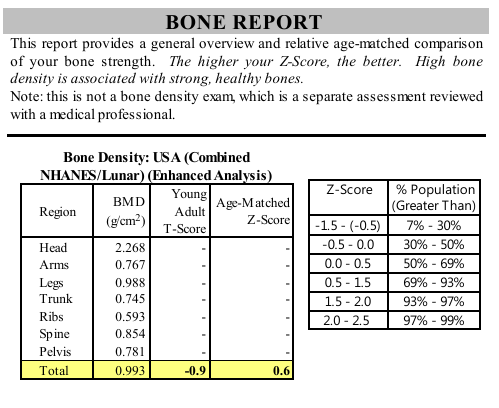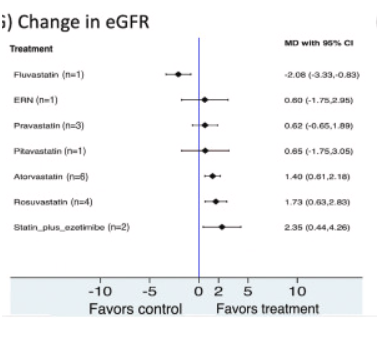mccoy
#43
I listened to R. lustig a while back on the Drive, about fructose. I remember he said fresh fruit is all right, which I agree with, for some people and purposes, and especially in the hot season it’s an excellent choice. Lots of unjustified demonization.
2 Likes
Neo
#44
@mccoy Thx. Seems that the “AI hallucination” was about the episode number:
The Drive podcast #82 with Dr. Robert Lustig
Episode 82 was actually
2 Likes
A_User
#45
It’s almost 2025, people should know about AI hallucinating sources by now.
AI needs to always be checked in the state it is in now.
1 Like
RapMet
#46
Yes, but is there even a need to do so? or that should be taken as a good thing since too low of glucose level would be a problem? If glucose is at normal levels, I’d rather not take acarbose and SGLT2I’s or if I’m taking them I’d be doing for other reasons, (i.e. simply maintenance and microbiome etc…) and taking them in very low doses.
1 Like
RapMet
#47
Great info and very helpful @A_User. thank you!
Has anyone mentioned PSA and prostate health (don’t see it in the list) and possible preventative measures?
1 Like
Neo
#48
They do lower glucose variability and especially the spikes. Lowering the spikes might be quite important.
2 Likes
adssx
#49
Do we have evidence that SGLT2i really lower spikes on normoglycemic people?
1 Like
N=1, yes, for me completely. As measured by CGM. See my writeup here: Canagliflozin for Anti-aging (part 2)
8 Likes
Neo
#51
@adssx
I saw the same trend during a short stint on Cana during the AgelessRx trial
Hopefully AglessRx will show their data across the participants at some point in some form
4 Likes
DrFraser as a 71 year old woman I get periodic DEXA scans but am only told my bone density. Do they measure the other stuff and just don’t tell me or do I need to ask? Thanks.
So there is the traditional use of DEXA which just looks at bone density, and then the newer use of DEXA, which isn’t covered by MediCare or Insurance, that is a whole body composition DEXA.
I did a blog on this which I think covers things - in some regions on the west coast, you can get this as cheap as $39. In many regions you may pay up to $199 for it but it shouldn’t be that high.
5 Likes
Good to know I can’t just substitute the newer one either as it doesn’t show the bones as well as the one specific for bones. Thanks! I’ve been wondering why we aren’t given all the information. 
2 Likes
The whole body DEXA does a pretty good job on bones, it’s just not optimized for it. If you have suggestion of an osteopenia or osteoporosis, then getting a dedicated bone DEXA is reasonable (or if you have known low Z scores on bone).
3 Likes
Bodyspec.com dexa body composition reports include a ‘bone report’ that looks like this:

It funny that they say ‘this isn’t a bone density exam’ and then they label the chart ‘bone density’.
They throw everyting in a pot, then calculate misleading t- and z-scores from that. It would have been better to receive no report, than what they produce.
A bone density scan intended for that purpose will focus on the spine, hip, and femur. My T-scores are actually in the -2.0 to -3.0 range.
4 Likes
adssx
#57
Comparative efficacy and choice of lipid-lowering drugs for cardiovascular and kidney outcomes in patients with chronic kidney disease: A systematic review and network meta-analysis
For the change in the eGFR, atorvastatin (mean difference [MD], 1.40; 95% CI, 0.61 to 2.18), rosuvastatin (MD, 1.73; 95% CI, 0.63 to 2.83), and statin plus ezetimibe (MD, 2.35; 95% CI, 0.44 to 4.26) showed statistically significant increases in the mean eGFR.
3 Likes
mccoy
#58
Very interesting study. One doubt though, what have we got in abscissae in the forest plots? I could not find the quantities or the parameter used specified.

1 Like
adssx
#59
" For a change in the eGFR, atorvastatin (MD, 1.40; 95% CI, 0.61 to 2.18) from six of RCTs, rosuvastatin (MD, 1.73; 95% CI, 0.63 to 2.83) from four of RCTs, and statin plus ezetimibe (MD, 2.35; 95% CI, 0.44 to 4.26) from two of RCTs had statistically significant mean eGFR increases compared with the control group (Fig. 3G and Fig. S4C)."
MD = Mean Difference
Here for eGFR.
So if that’s 2 mL/min/1.73m2 it’s not clinically significant…
A lot depends upon how eGFR is calculated. I am not sure it is that much use for RCTs unless there is a big shift and the measurement of it is tightly controlled. When you do a meta analsyis without getting into the details as to how eGFR is calculated you might as well give up and go to the pub as you cannot realistically expect sensible information.
1 Like
mccoy
#61
adssx, in the plausible hypothesis that the measure unit is the one you cite, and since the normal range is, according to specialistic sites.
- A normal eGFR is greater than 90, but values as low as 60 are considered normal if there is no other evidence of kidney disease.
- eGFR is often shown as a percentage of normal because people find it useful to think of kidney function as a percentage, going from 100% (fully functioning) to 0% (no function).
In this case, a median increase as seen in rosuvastatin (1.73 mL/min/1.73m2), although statistically significant, would be pretty trivial, that is wouldn’t move the needle.
Conversely, a median decreas of about 2 mL/min/1.73m2 in fluvastatin wouldn’t constitute a significant worsening.
In other words, the results of the administration of statins or statins+eze on kidney functions can be neglected to all practical purposes.
2 Likes